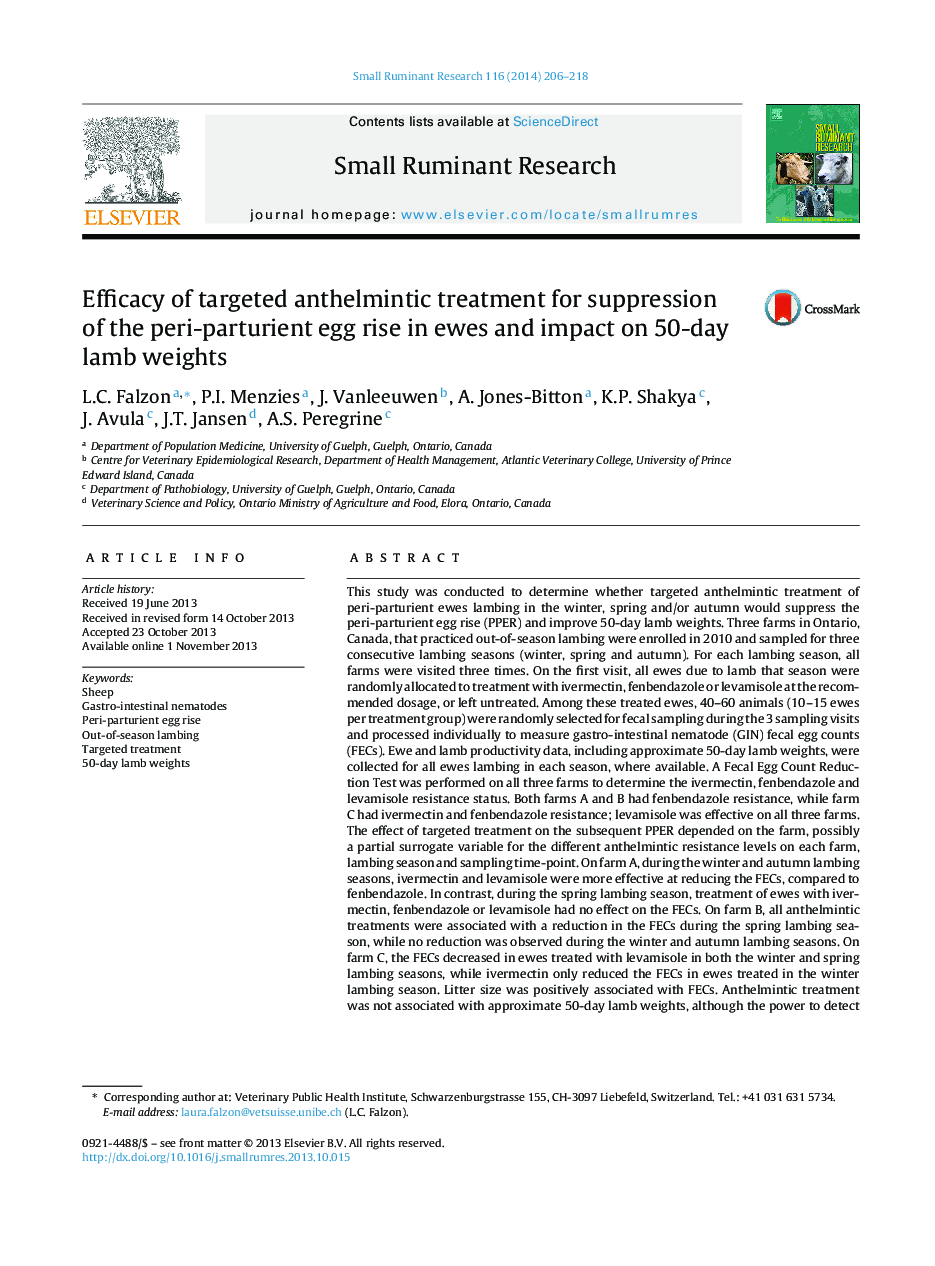| Article ID | Journal | Published Year | Pages | File Type |
|---|---|---|---|---|
| 2457108 | Small Ruminant Research | 2014 | 13 Pages |
This study was conducted to determine whether targeted anthelmintic treatment of peri-parturient ewes lambing in the winter, spring and/or autumn would suppress the peri-parturient egg rise (PPER) and improve 50-day lamb weights. Three farms in Ontario, Canada, that practiced out-of-season lambing were enrolled in 2010 and sampled for three consecutive lambing seasons (winter, spring and autumn). For each lambing season, all farms were visited three times. On the first visit, all ewes due to lamb that season were randomly allocated to treatment with ivermectin, fenbendazole or levamisole at the recommended dosage, or left untreated. Among these treated ewes, 40–60 animals (10–15 ewes per treatment group) were randomly selected for fecal sampling during the 3 sampling visits and processed individually to measure gastro-intestinal nematode (GIN) fecal egg counts (FECs). Ewe and lamb productivity data, including approximate 50-day lamb weights, were collected for all ewes lambing in each season, where available. A Fecal Egg Count Reduction Test was performed on all three farms to determine the ivermectin, fenbendazole and levamisole resistance status. Both farms A and B had fenbendazole resistance, while farm C had ivermectin and fenbendazole resistance; levamisole was effective on all three farms. The effect of targeted treatment on the subsequent PPER depended on the farm, possibly a partial surrogate variable for the different anthelmintic resistance levels on each farm, lambing season and sampling time-point. On farm A, during the winter and autumn lambing seasons, ivermectin and levamisole were more effective at reducing the FECs, compared to fenbendazole. In contrast, during the spring lambing season, treatment of ewes with ivermectin, fenbendazole or levamisole had no effect on the FECs. On farm B, all anthelmintic treatments were associated with a reduction in the FECs during the spring lambing season, while no reduction was observed during the winter and autumn lambing seasons. On farm C, the FECs decreased in ewes treated with levamisole in both the winter and spring lambing seasons, while ivermectin only reduced the FECs in ewes treated in the winter lambing season. Litter size was positively associated with FECs. Anthelmintic treatment was not associated with approximate 50-day lamb weights, although the power to detect significant difference was lower than anticipated due to only having relevant weight data from farm A. These results suggest that the efficacy of targeted treatment for the suppression of the PPER depends on the anthelmintics’ efficacy and time of treatment in relation to the grazing period.
